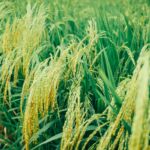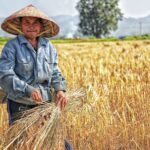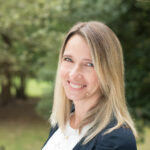In this piece, Ksapa interviewed Christele Delbé, Director Supply Chain Solutions and Hatim Issoufaly, Programs Director Agronomy and Development to discuss the use of certification programs with smallholders.
Certification schemes set and monitor voluntary standards pertaining to specific environmental, social or economic goals (ex: to make agricultural production more sustainable and eco-friendly). For the purpose of this article, certification schemes refer to certification schemes broadly as a concept, as there is considerable discrepancy based on the certification type, the commodity under consideration and so on and so forth.
Based on your experience, what are the main reasons – in other words, the pros and cons – for certifying a product from the perspective of different stakeholders (producers, business and consumers)?
Hatim
According to me, the main reason for certification is to garner interest from consumers. Certifications differentiate a product from other products in the same category, making the said product distinct either in the way it has been produced (eco-friendly produced/sustainable practices, etc.), the geographical region it comes from (Basmati rice from India, for example), or in who it caters to (targeting consumers who want to buy fair trade coffee, for example).
The main benefits of certifying a product are:
- For producers/farmers – Certification schemes enable farmers to invest (time and money) in improving the overall quality standards of their products; it is a continuous process to improve their practices and standards.
- For businesses – A company can increase its market share by attracting new consumers, thereby creating a distinct category of products aiming to cater to a new category of consumers. Subsequently, when market share become stable, it enables the business to secure a qualitative portion of their sourcing. Certification also allows businesses to charge higher prices for their products and ask for a premium.
- For consumers – increased traceability (produced where / by whom) and visibility (which method or concept) of the product they are buying.
For the broader supply chain, certification can help protect suppliers from market volatility as it acts as a buffer on price… although this depends on the commodity under consideration. Certification, likewise, distinguishes a product from counterfeit products, by lending greater control over the production process. This in turn helps increase trust, and thus loyalty, from consumers. As a result, certification programs can be considered a win-win strategy for the whole supply chain, from the producer up to the consumer.
However, a key drawback of certification programs lies in their cost. There are several commodities, such as cocoa, for which the cost of certification is borne by the industry. However, for others – like coffee and palm oil – the cost is largely borne by the farmer. This constitutes a huge barrier, limiting access to certification programs and their benefits to vulnerable farmers.
Christèle
Voluntary sustainability standards (VSS) are a type of certification scheme which can help smallholders improve practices. VSS are norms and standards designed to ensure that a product is produced, processed or transported sustainably in order to contribute to specific environmental, social and economic targets. The benefits of Voluntary Sustainability Standards (VSS) vary greatly from one commodity to another, and from one certification scheme to another.
Producers may benefit if the training necessary to achieve certification enables them to increase yield and quality. That may translate into higher income. Certain recommended practices may also lead to reduced costs.
VSS may also enable buyers at the country level to differentiate themselves in the market and may command a higher premium. That, however, really depends on the commodity. In some cases, certification is a condition of trade rather than a guarantee of premium.
Consumers benefit from a certain level of reassurance with regards to the social and environmental impact of their purchase. However, the proliferation of standards has resulted in confusing consumers and achieving differentiation is increasingly difficult.
Why can certification schemes be helpful for smallholders to improve practices?
Hatim
Generally, obtaining a certification implies that the farmer has followed good agricultural practices (GAP), which usually involve recognized standards and processes to deliver a product. With that in mind, certification schemes can be helpful for smallholders to improve practices since they enable them to learn, often for the first time, about good practices, industry quality requirements, and market trends. Certification processes also help compensate for the lack of training and access to resources (storage facilities, efficient tools…) for smallholder farmers. However, some certifications – such as international certifications and standards – can have constrains and are challenging to adapt to the local contexts of smallholders (cf.next paragraph).
Christèle
VSS schemes provide a useful framework to help address practices which have an adverse social or environmental effect. For example, a standard may ban the use of certain chemicals which may still be allowed at a country level or mandate the use of PPE in the field for certain activities.
However, standards in isolation may not be sufficient to help smallholders change practices. To go back to my earlier example, they will most certainly need to replace the banned pesticide with another practice to protect their crop. Is the smallholder informed of alternative practices or products? Is there a cost implication? Similarly, the use of PPE may be heavily influenced by the ability to invest in such equipment.
What current challenges explain the low uptake of certification schemes by smallholders?
Hatim
To a certain extent, it all comes down to the cost and the complex nature of the administrative work involved. Particularly when the certification programs are not adaptable to the local context, the buyer often needs to actively support the farmer throughout the administrative process: setting up a certification unit is common in companies trading commodities with specific processing stages that increase the final added value (coffee, cocoa, nuts…). As a matter of fact, such schemes may not offer direct benefits to the farmer, such as increased yield or quality in a way that can be recognized by purchasers. For instance, this is relevant in the case of environmental standards. As a result, they may not offer enough incentive for farmers. Another reason lies in the farmers’ reluctance to formalize their operations through a clear deed/tenure, owing to tax purposes.
However, when a certification scheme is co-designed with targeted stakeholders in mind, it can be very beneficial. As an example, Hatim Issoufaly, Ksapa Director of Operations, has supported vanilla growers in La Réunion to get the European Commission label “Indication Géographique Protégée” (IGP, Protected Geographical Indication) under the denomination “Vanille de l’Ile de la Réunion”. This process, involving independent farmers, cooperative members, and processors, was a 5-year administrative process to:
- Document the on-going traditional practices from production up to processing (curing) of the vanilla beans.
- Make note of the specifications and gather proof that vanilla has been cultivating in a delineated area for more than a century on the island.
- Submit the files to the French Institute in-charge of facilitating the process to EC (INAO) and subsequent follow-ups.
- Set up an internal and external control and monitoring system with a registered certifying body.
All these steps were facilitated and funded by District authorities under the frame of a local-product valorization policy. Currently, less than 100 operators are under the IGP Vanille de l’île de la Réunion, and have received a significant premium from the European Commission.
The main outcomes of this certification are increased traceability and visibility of the local vanilla supply chain stakeholders to consumers. Indeed, Vanilla sold under the label IGP “Vanille de l’île de la Réunion” is not suffering anymore from unfair competition from vanilla coming from the rest of the Indian Ocean (usually sold under the catch-all “Bourbon” appellation).
Christèle
Changing practices to align with VSS requires an investment in time from smallholders. They will very much expect to see some evidence of return on their investment. Understandably, they will be asking “what is in it for me?”. However, most VSS do not guarantee higher premiums and the smallholder may in fact not benefit financially. Depending on market conditions, the crop may command a premium but for some commodities, this is often not the case. VSS is, for some commodities, used by buyers as a condition of trade and they may not reward those who invest in aligning their practices with their chosen standard.
Another challenge faced by smallholders is related to their ability to access the training needed to achieve certification level. The training offered by the business they supply may be sporadic or non-existent due to insufficient resources to dispense the training to a large smallholder base. Illiteracy levels may also be a challenge.
How can technology help overcome these challenges?
Hatim
Technology can be a good lever to help overcome these challenges. For instance, with our Scale Up, Training, Traceability and Impact initiative (SUTTI) – we offer large-scale hybrid training and capacity-building programs. It enables farmers to learn new practices to comply with certification requirements, and reduces administrative burdens such as constrains related to measuring their plots, personal data collection etc. Indeed, everything can be done through the low-tech application, with the help of the field officer to systemize the process. All the data is stored in an online database and is easily accessible for farmers. From the producer to the consumer, the mobile application can also help increase traceability which is key to certain certification schemes. Technology can also leverage tools like farmer profiles and GPS and help reach the last mile.
Christèle
New opportunities usually occur when technology becomes widely accessible. This is for example the case with mobile technology. Access to a mobile may for example offer the opportunity of access to weather information or crop market prices. Buyers may also introduce applications which enable access to training to complement existing in-person training that may be insufficient. Mobile applications can also be used to capture farm data in order to track the profitability of a farm or work towards certification.
The SUTTI initiative supports the overall improvement of smallholders’ living conditions, the development of trusted relations between local suppliers and industries. It also aligns with the many interests of different stakeholders all along the value chain. Ksapa works at the center of the ecosystem, and we drive the identification of key value chain players. The goal is ultimately to pool the skills, expectations and interests of different players, from farmers to local manufacturers, global brands, investors, etc. Together, they inform a complete inventory of key agricultural value chains. This 360-degree analysis is fundamental to the sound implementation of SUTTI projects, and our team encapsulates supply chain strategy, certification, and on-site field work via local affiliates.










